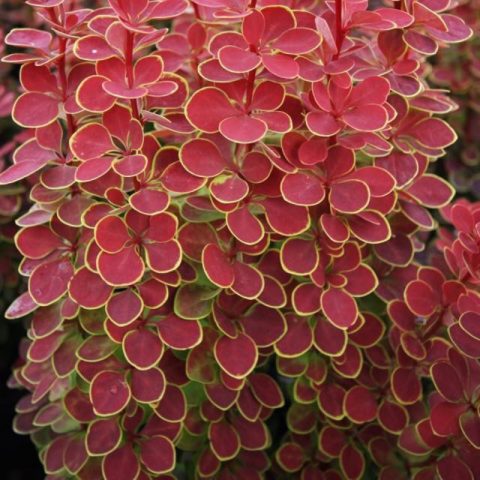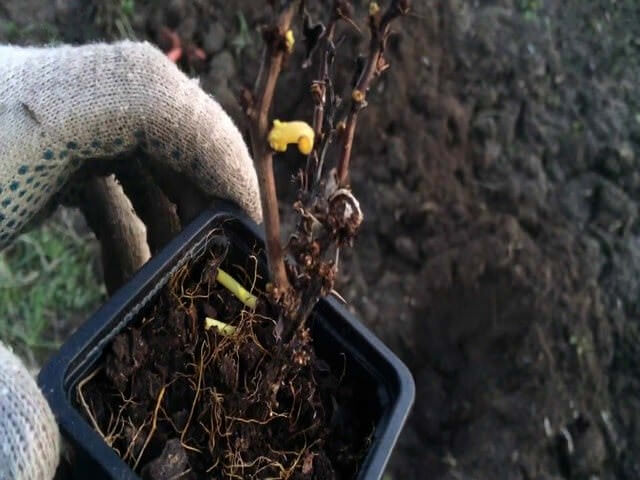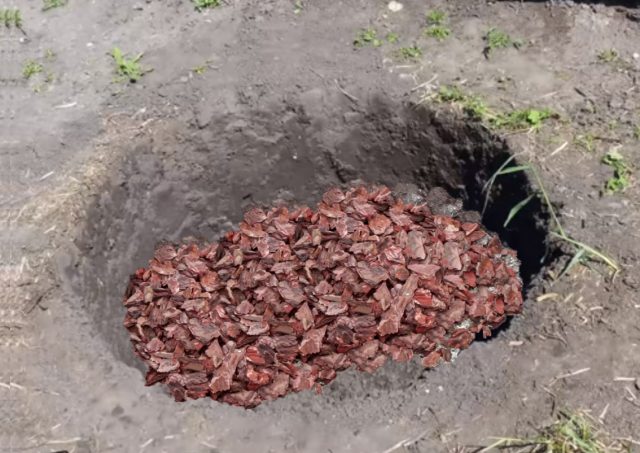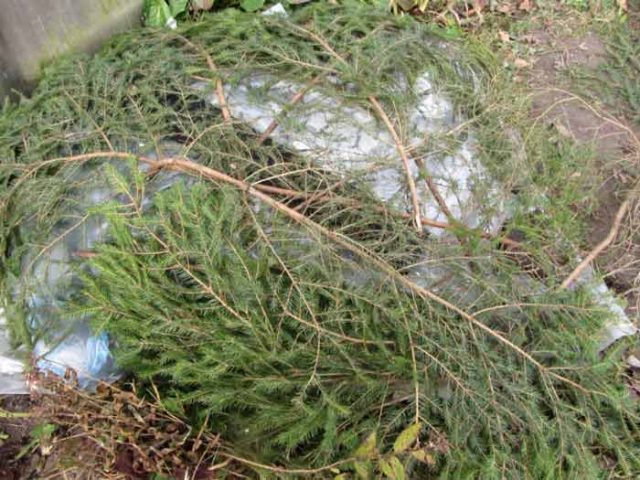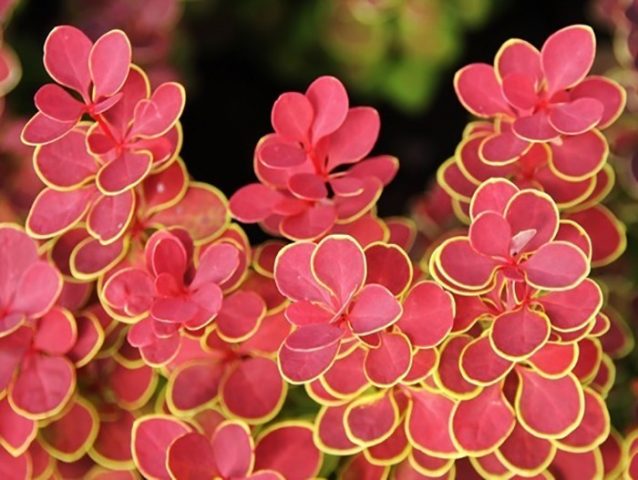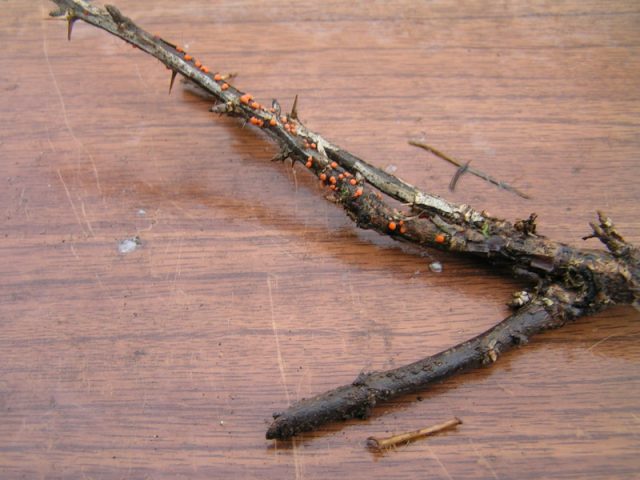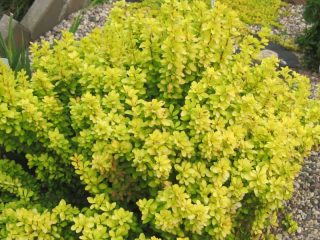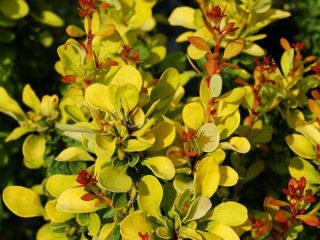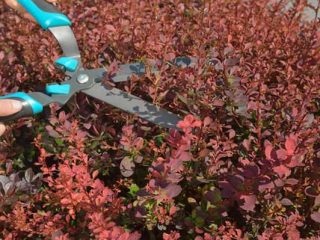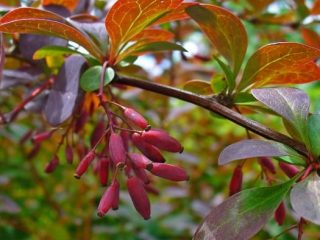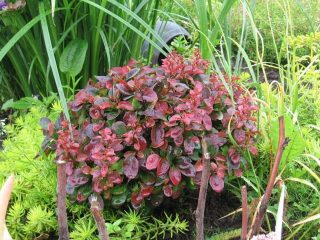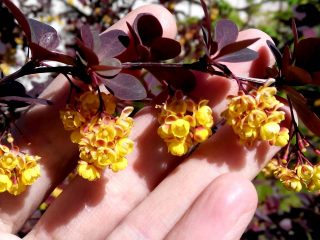Content
To improve garden and park areas, some varieties of barberry are used. They have an attractive appearance and are easy to care for. One such shrub is the Orange Sunrise barberry. This plant looks quite impressive thanks to its bright, rounded leaves.
Description of Barberry Thunberg Orange Sunrise
The shrub grows no more than 1.5 m in height. It has densely leafy, red, erect branches. The leaves are round, coin-shaped, bright orange or scarlet, up to 3 cm long. In older shrubs, a yellow border appears along the edge of the leaves. This color allows you to grow Sunrise barberry as an ornamental plant.
Photos and descriptions of Thunberg barberry Orange Sunrise are presented below:
Barberry blooms in early May. Single red flowers with yellow stamens grow densely throughout the shoot. The bush blooms for about 3 weeks.
Sharp, elastic spines, at least 1 cm long, appear on the shoots of adult plants. The branches are densely dotted with them. This allows you to use Orange Sunrise barberry as a hedge.
In autumn the bush bears fruit.Round, slightly elongated red fruits appear on it. They are not eaten because of their bitter taste.
The Thunberg barberry is native to the Far East. The Orange Sunrise variety was bred in the nursery.
Planting and care
All barberries are unpretentious, but they love the sun very much. On the well-lit side, the shrub takes root better after planting, and its color is brighter.
Preparing seedlings and planting area
Sunrise barberry seedlings are purchased from nurseries. This plant is well fertilized and takes root better. Choose a shrub with a well-developed root system. The shoots and leaves are clean and undamaged. Before planting, the barberry rhizome is wrapped in a damp cloth and the seedling is left for half an hour. The root is then soaked in a solution of water and a growth stimulant.
At this time, prepare a hole for planting. It is located in a sunny, slightly windy area. The depth and width of the hole are measured according to the size of the rhizome. The root collar should be 1 cm below the soil level, and the rhizome should easily fit in the hole when straightened. For planting, choose fertile soils or fertilize the soil before rooting. The soil must be thoroughly loosened.
Planting Barberry Thunberg Orange Sunrise
Shrub seedlings are rooted in the spring, when night frosts have passed. In the summer, the plant will take root and get stronger before the onset of winter cold.
The roots of Barberry Orange Sunrise can rot from the abundance of groundwater or in overly moist areas. To prevent this from happening, drainage is done in the hole before planting. To do this, lay a layer of at least 10 cm of expanded clay, small stones or broken bricks at the bottom of the planting hole. Sprinkle a layer of earth on top.
The root is placed in a hole, sprinkled with soil mixed with sand and humus in equal parts, and trampled down. Afterwards, a bucket of water is poured under the bush. If the soil is acidic, it must be fertilized with slaked lime (300 g) or wood ash (200 g). The seedlings are placed at a distance of half a meter from each other.
Watering and fertilizing
In order for the Orange Sunrise barberry to develop well and not lose its decorative qualities, it must be regularly watered and fed.
In spring, nitrogen fertilizers are applied at the root. You can water the bush with urea. To do this, 20 g of fertilizer is diluted in 10 liters of water. Afterwards, the bush is fertilized twice more a year: in summer and autumn. Multicomponent fertilizers are suitable for additional feeding.
In summer, the bush is watered once every 7 days. Since barberry does not like excess moisture, it is important to regularly loosen the soil in the root area. After watering, it is good to mulch the soil with sawdust or peat.
Trimming
Regular pruning will allow you to form a beautiful bush shape. The first pruning of the shoots is done immediately after planting. To do this, they are shortened by a third.
In the fall, dry and damaged shoots are pruned, which prevent the formation of a beautiful crown.
In the spring, pruning is also carried out, shortening all shoots by about a third. This stimulates the growth of new branches, the bush becomes more lush.
Preparing for winter
Barberry Orange Sunrise is not a frost-resistant plant, and it is insulated for the winter. Young plants are completely covered with spruce branches.
More mature plants must be covered with dry leaves and burlap:
- To do this, the shoots are tied in pairs and bent to the ground.
- Then they are secured with staples to the soil. A layer of dry leaves is poured on top.
- Afterwards the natural insulation is covered with burlap.
Instead of burlap, you can take agrofibre or roofing felt.
Reproduction
Barberry Orange Sunrise is propagated by cuttings, less often by seeds. But this is a very long and labor-intensive process, so it is easier to get a young plant from a shoot.
To do this you need to do the following:
- Find 2-3 green, healthy branches with well-developed shoots on the Orange barberry bush.
- The leaves are removed from the branches, and the resulting sticks are cut into 2-3 parts at an acute angle.
- Both ends of the resulting cuttings are soaked in a growth accelerator solution.
After a branch 15-20 cm long, one end is placed in a transparent container with water. Once the roots have developed, the plants are planted in containers with soil. In spring they are rooted in open ground.
Diseases and pests
Barberry Orange Sunrise is susceptible to pests and diseases of garden plants, the main of which is powdery mildew. It is easy to identify - it is a white coating on the leaves of barberry. To treat and prevent the disease, the bush is sprayed with fungicides.
If orange and yellow spots appear on the leaves, rust is suspected. This is a common fungal infection of fungal plants. If it is neglected, the plant may die. To combat rust, various types of antifungal drugs for garden plants are suitable.
All types of garden spot affect Thunberg barberry. The disease manifests itself as spots of different colors on the leaves of the bush. Treatment begins in early spring before flowering begins. The bush is treated with special preparations, including a solution of copper sulfate.
Bacteriosis is a dangerous disease for barberry Orange Sunrise. The lesion manifests itself as thickening of the shoots and fracture of the bark. You can fight them only if the affected area is small.To do this, damaged branches are cut off, and the cut areas are treated with garden varnish. Afterwards the bush is sprayed with a solution of copper sulfate.
Drying of shoots is a common disease of barberries. The plant begins to wither and wither for no apparent reason. At this time, the fungus attacks the root system of the bush and destroys it. In this case, the affected shoots are cut off and the crown is sprayed with fungicides.
Pests of barberry Orange Sunrise:
- aphid;
- flower honeydew;
- barberry sawfly.
To combat these types of pests, Chlorophos is used. The bush is sprayed in spring and autumn for prevention. You can use traditional methods: spraying with a solution of laundry soap or tobacco.
You should not wait for the plant to die; you should use modern drugs.
To destroy pests quickly and effectively, acaricides and insecticides are used. These modern products work well against most known garden pests. The following drugs are suitable for treatment: “Biotlin”, “Karbofos”, “Antitlin”.
Conclusion
Garden shrub barberry Orange Sunrise grows well and develops only if it falls into caring hands. Regular watering, pruning and loosening the soil is a guarantee that the bush will display its decorative qualities in all its glory. Scarlet leaves with a yellow edging and a lush crown will become a real decoration of any garden. Orange Sunrise barberry is used to form a bright impenetrable hedge or use it to create borders for flower beds. A composition of several barberries of different colors looks impressive.
